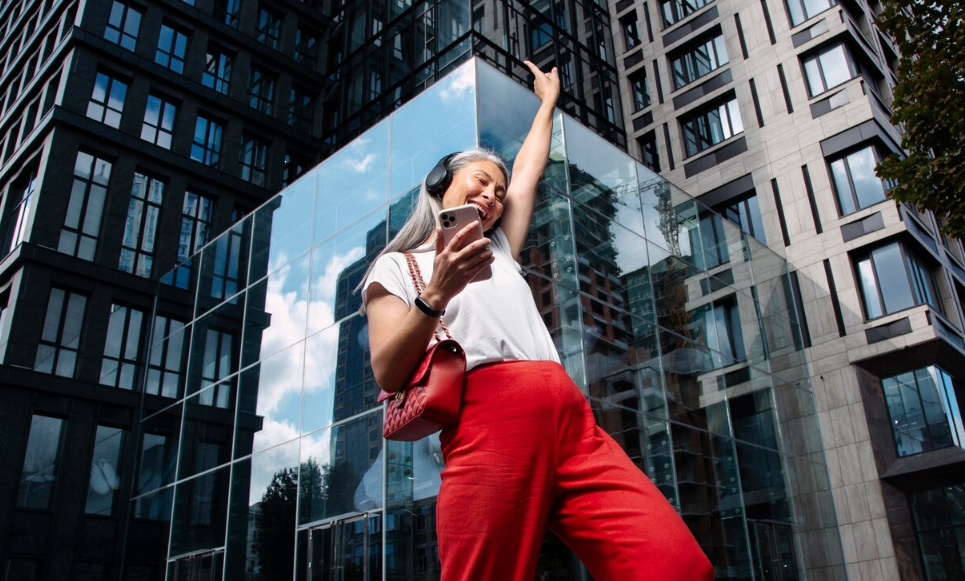In the hustle and bustle of modern life, where cities are constantly buzzing with activity and the demands on our time are ever-increasing, sleep is often the first casualty. The pressure of work, social commitments, and the relentless pace of urban living leave many struggling to get enough quality sleep. But what if our cities were designed not only to accommodate our daily activities but also to promote optimal rest and sleep health? Welcome to the concept of Sleep-Tech Cities—urban environments that are intentionally engineered to foster better sleep patterns and overall well-being.
As research increasingly links sleep to mental and physical health, urban planners, architects, and technology innovators are beginning to rethink how cities are structured, using sleep-optimized designs and smart technologies to create environments conducive to restorative sleep.
What is a Sleep-Tech City?
A Sleep-Tech City is a future vision of urban development where sleep-enhancing technologies and design principles are integrated into the fabric of the city. These cities would prioritize sleep hygiene, circadian rhythms, and overall well-being by using smart infrastructure and cutting-edge technology to reduce factors that negatively impact sleep. From noise reduction to light pollution control, these cities would be designed to create an environment where sleep is prioritized as a vital element of health and productivity.
Here’s a closer look at the key components that could make up these futuristic cities:
1. Light and Darkness: Optimizing Natural Light for Better Sleep
One of the most significant factors influencing sleep is light. Our bodies are naturally programmed to follow the circadian rhythm, which is heavily influenced by the cycle of light and darkness. Artificial light, especially blue light from screens, can disrupt our natural sleep-wake cycle, leading to insomnia and poor sleep quality.
Smart Lighting Systems
In Sleep-Tech Cities, smart lighting would be deployed to mimic the natural movement of the sun. By adjusting the intensity and color temperature of streetlights, building lights, and even home lighting systems, cities can promote a more natural transition between wakefulness and sleep. For example, daytime lighting could have a cooler, bluer hue to simulate daylight, while nighttime lighting would shift to a warmer, redder hue to signal the body that it’s time to wind down.
Additionally, automated blackout curtains could be installed in homes and offices, allowing residents to control the amount of light entering their space, preventing the overstimulation of artificial light during the evening.
Urban Planning for Natural Light
Beyond artificial lighting, city planning could take advantage of the urban landscape to maximize natural light. Buildings could be designed with large windows and strategically placed skylights, ensuring that both residential and commercial spaces are well-lit by daylight, especially in areas where people spend a significant amount of time during the day. Moreover, green spaces like parks and gardens could be woven into urban designs, providing both exposure to natural light and access to restorative outdoor environments.
2. Noise Reduction: Soundscapes for Sleep
Noise is a major disruptor of sleep, particularly in dense urban areas. From the hum of traffic to the blare of sirens and the chatter of crowds, cities are full of noise that can make restful sleep a challenge. In a Sleep-Tech City, noise pollution would be minimized, and soundscapes would be carefully designed to promote tranquility.
Acoustic Planning and Soundproofing
Buildings and homes could be constructed with advanced soundproofing technologies, utilizing materials that dampen sound and reduce the transmission of noise from external sources. Noise-canceling technologies might be integrated into public spaces and homes, with systems that actively neutralize unwanted sound frequencies.
Ambient Soundscapes
Instead of noisy environments, Sleep-Tech Cities could embrace the idea of ambient soundscapes designed to enhance sleep. In parks, streets, and public spaces, cities could implement calming sounds like gentle water fountains, bird songs, or nature-inspired soundtracks to create a relaxing atmosphere. Additionally, smart home systems could integrate with white noise generators or sound-canceling systems to ensure that individual sleep spaces remain undisturbed by external noise.
3. Air Quality and Temperature Control
Both air quality and temperature play a significant role in sleep quality. Fresh, clean air can promote better sleep, while poor air quality can contribute to conditions like asthma, allergies, and disrupted sleep.
Green Urban Design
In Sleep-Tech Cities, green architecture and urban farming could contribute to better air quality. Urban rooftops and walls could be covered with plants, which naturally filter the air and reduce pollutants. Trees and green corridors in neighborhoods could also help absorb CO2, purify the air, and promote a sense of calm.
Smart Climate Control Systems
Temperature is another factor that can influence sleep. Smart climate control systems integrated into buildings and homes would allow residents to easily adjust the temperature for optimal sleep conditions. Thermal insulation in buildings would also regulate indoor temperatures, reducing the need for air conditioning or heating during sleep hours, which can be disruptive.
4. Smart Technology for Sleep Monitoring
Sleep-Tech Cities would also harness the power of wearable technologies and smart home devices to monitor and improve sleep quality. Through sleep trackers, smart beds, and sleep apps, residents could gain insights into their sleep patterns, identify disruptions, and receive personalized recommendations for improvement.
Sleep Analytics and AI
Using AI and machine learning, sleep analytics platforms could help identify potential issues like sleep apnea, restless leg syndrome, or other sleep disorders. In the future, residents of Sleep-Tech Cities could even receive real-time recommendations for lifestyle changes, such as adjusting their evening routines or optimizing their bedroom environment, to improve their sleep quality.
5. Access to Restorative Spaces: The Power of Green Areas
Sleep-Tech Cities would recognize that rest goes beyond the bedroom. Access to green spaces and public parks is essential for relaxation and stress reduction. These areas would be designed not just as places for physical activity but as restorative environments that encourage rest, reflection, and relaxation.
Meditation Zones and Nap Areas
Designated meditation zones, nap pods, and quiet zones would be scattered throughout urban areas, providing people with opportunities to take short breaks or engage in calming activities like yoga or mindfulness. These spaces would be carefully designed with calming aesthetics, natural materials, and low lighting to enhance the restorative experience.
6. Work-Life Balance in Urban Planning
Sleep is also deeply connected to work-life balance, and Sleep-Tech Cities would be designed with this in mind. By encouraging flexible work schedules, access to sleep-friendly spaces, and reducing the stress of long commutes, these cities would help individuals get the rest they need to function at their best.
Flexible Work Environments
Telecommuting options, remote work hubs, and flexible working hours would be common in these cities, reducing the stress of long office hours and lengthy commutes. These measures would give residents more time to rest and recover, contributing to a healthier sleep routine.
The Future of Sleep-Tech Cities
As urban populations continue to grow, the need for innovative solutions to the challenges of urban living becomes more urgent. Sleep-Tech Cities could pave the way for a future where well-being is prioritized just as much as economic growth. Through thoughtful urban planning, cutting-edge technology, and a focus on sleep health, these cities would offer their residents a better quality of life, with more restful nights and more productive days.
In the future, sleep may no longer be something we simply strive to get—it may become something we can design into our cities, seamlessly woven into the very fabric of urban life.
Sleep-Tech Cities are not just about improving the quality of sleep; they are about enhancing the overall quality of life by creating environments that nurture our natural need for rest. With the right combination of design, technology, and mindfulness, these cities could transform the way we live and sleep for generations to come.


